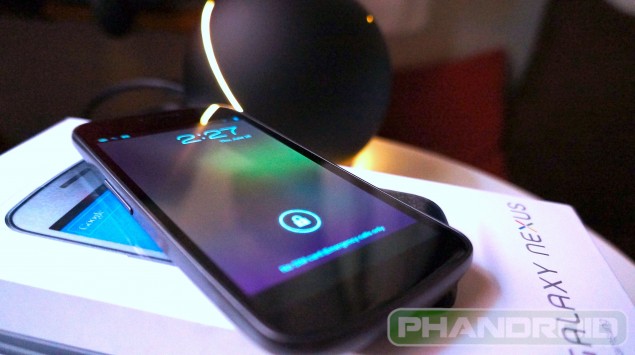Samsung Takes Off The Gloves: Claims iPhone Wouldn’t Even Exist Without Samsung’s Technology
While Samsung and Apple begin tying their handwraps in anticipation for their court date next week, some newly published court docs are revealing all the drama the two have been saying about each other this past week, and it’s pretty eye opening.
By now, we pretty much know Apple’s side to the case. Last night, we even showed you guys an image that sums up their position in their patent case against Samsung. Before the iPhone — the smartphone world was big, clunky, and full of buttons. It was only after the iPhone, that OEM’s began releasing rectangular slates, minus all those gratuitous buttons getting in the way. BS. We know.
But up until now, we haven’t really heard Samsung’s side of the story. Sure, they’ve made some public statements here and there, but I more or less pictured them deflecting Apple’s attacks, not really going on the offensive. Boy, was I wrong. As revealed in the now public court docs, Samsung hasn’t been pulling back any punches, going as far as claiming that without Samsung’s tech — the iPhone wouldn’t even exist. Here’s a little excerpt from Samsung’s trial breif, as provided by The Wall Street Journal:
Samsung has been researching and developing mobile telecommunications technology since at least as early as 1991 and invented much of the technology for today‘s smartphones. Indeed, Apple, which sold its first iPhone nearly twenty years after Samsung started developing mobile phone technology, could not have sold a single iPhone without the benefit of Samsung‘s patented technology.
For good measure, Apple seeks to exclude Samsung from the market, based on its complaints that Samsung has used the very same public domain design concepts that Apple borrowed from other competitors, including Sony, to develop the iPhone. Apple‘s own internal documents show this. In February 2006, before the claimed iPhone design was conceived of, Apple executive Tony Fadell circulated a news article that contained an interview of a Sony designer to Steve Jobs, Jonathan Ive and others. In the article, the Sony designer discussed Sony portable electronic device designs that lacked “excessive ornamentation” such as buttons, fit in the hand, were “square with a screen” and had “corners [which] have been rounded out.”
Contrary to the image it has cultivated in the popular press, Apple has admitted in internal documents that its strength is not in developing new technologies first, but in successfully commercializing them. . . . Also contrary to Apple‘s accusations, Samsung does not need or want to copy; rather, it strives to best the competition by developing multiple, unique products. Samsung internal documents from 2006, well before the iPhone was announced, show rectangular phones with rounded corners, large displays, flat front faces, and graphic interfaces with icons with grid layouts.
Prior to the iPhone‘s announcement in January 2007, Samsung was already developing numerous products and models with the same design features that Apple now claims were copied from the iPhone. In the summer of 2006, Samsung began designing its next generation of mobile phones, based on the market trend of ever-increasing screen size. At that time, Samsung‘s designers envisioned a basic design: a simple, rounded rectangular body dominated by a display screen with a single physical button on the face.
As . . . documents confirm, Samsung independently developed the allegedly copied design features months before Apple had even announced the iPhone. It did not switch its design direction because of the iPhone.
Apple‘s utility patents relate to ancillary features that allow users to perform trivial touch screen functions, even though these technologies were developed and in widespread use well before Apple entered the mobile device market in 2007. Samsung does not infringe any of Apple‘s patents and has located dead-on prior art that invalidates them.
Apple relied heavily on Samsung‘s technology to enter the telecommunications space, and it continues to use Samsung‘s technology to this day in its iPhone and iPad products. For example, Samsung supplies the flash memory, main memory, and application processor for the iPhone. . . . But Apple also uses patented Samsung technology that it has not paid for. This includes standards-essential technology required for Apple‘s products to interact with products from other manufacturers, and several device features that Samsung developed for use in its products.
Long before Apple even announced any of its 3G products that use Samsung‘s standards-essential technology, Samsung had offered licenses for these patents (along with other patents) to virtually every major player in the mobile phone industry, successfully striking cross-licensing deals with all of them. After Apple released products that use the technology patented in the [two standards-essential patents at issue in the trial], Samsung similarly offered a cross-licensing deal to Apple, asking for a fair and reasonable royalty in return for Apple‘s use of Samsung‘s technology. Unlike all the major players in the mobile phone industry, however, Apple refused to enter a cross-licensing deal with Samsung.
Instead, despite the fact that virtually every other major industry participant was willing to take a license from Samsung for use of the standards-essential patents in this suit, Apple claimed that Samsung‘s patents are unenforceable.
Permission to speak freely? Oh, snap! Looks like Samsung just opened a big can of whoop-azz on Apple. But really though, it’s hard to argue with Samsung’s statement. Let’s just hope for a fair, and impartial judge. Curious to hear more on Apple’s side of the matter. Samsung’s full trial brief can be viewed here.
Thanks, Simpleankit!
[BGR]
